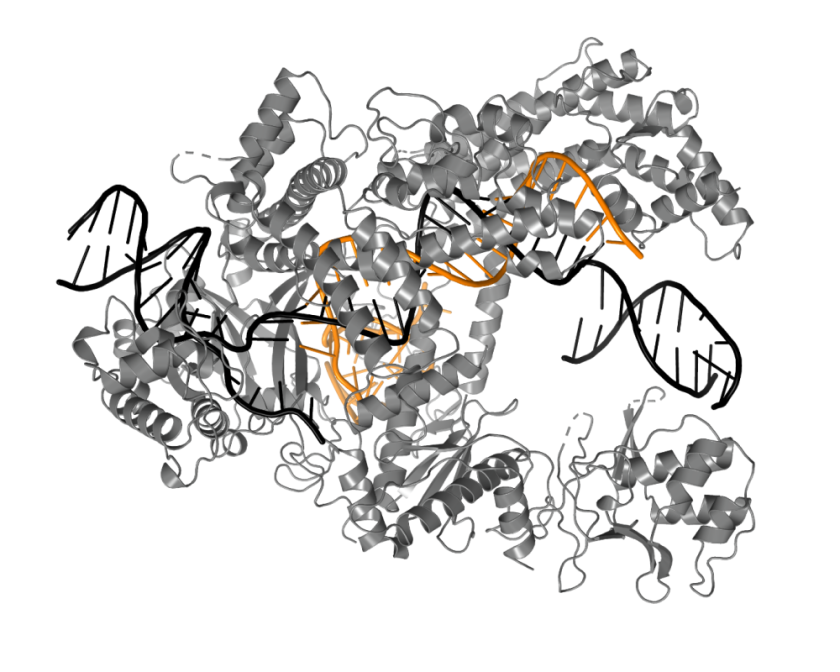
News
Two Wageningen researchers to receive European grants worth millions
Two Wageningen researchers, Daan Swarts and Marnix Medema, are to receive a grant for one and a half million euros each from the European Research Council. Both intend to use this so-called ERC Starting Grant for fundamental research to map immune systems in bacteria, that could possibly be used to develop virus tests, and to unravel the chemical language with which bacteria and their hosts exchange messages.
Daan Swarts - Bacteria have the tools needed to develop virus tests
The COVID-19 outbreak has made the need for extensive and rapid testing for viruses apparent. Viruses can be detected using sensitive tests that recognise snippets of viral DNA or RNA. Daan Swarts strives to develop tools that have this capability. ‘The wonderful thing is that there is no need to invent these tools; nature has already taken care of that. Systems that can do this are already present in bacteria.’
‘Bacteria too can get infected by viruses,’ the Biochemistry lecturer states. ‘And they come equipped with an arsenal of immune systems to prevent this from happening. These immune systems are programmed to specifically recognise the DNA or RNA of different viruses. Immediately upon identifying such a virus, the immune system neutralises it by chopping up the virus DNA or RNA, or by issuing a warning signal so that other systems neutralise the virus’, he explains.
However, viruses constantly mutate in order to circumvent the immune system. ‘This is the reason that a huge number of immune systems have evolved in bacteria. The trick is to identify these systems and figure out how they work. Then, we may see if we can extract them from the bacteria and repurpose them for our benefit. Some of these systems are already known to us, and these systems are already being used as programmable tools to identify viruses or mutations in DNA.’ These systems are known as CRISPR-Cas and Argonaute-systems.

‘Such systems may also be used to make alterations in the DNA of, for example, bacteria and plants. Because these systems cuts the viral DNA in the bacteria, we can also program them to cut DNA in the place of our choosing. This makes it possible to change DNA sequences’, Swarts states. ‘This is not only useful in research to determine the function of certain genes in DNA, but also in research on DNA-defects. It is likely we will be able to use these tools in the future to detect, and possibly even repair, DNA-defects in humans.’
Identifying unknown immune systems
The workings of many bacterial immune systems are unknown. Swarts’ ERC research focuses on discovering how these immune systems work and studying if they may be repurposed as new genetic tools. These tools may be even better at identifying viruses, or more efficient at altering DNA, than currently used tools.

Marnix Medema – The chemical language of bacteria
Humans, animals and plants share their world with billions of bacteria: their ‘microbiome’. Not only are most of these bacteria benign, they are also essential to the health of their hosts, as they provide protection from diseases and stress, or supply them with vital nutrients. In recent years it has become clear that specialised molecules largely facilitate these microbial activities. These molecules form a ‘chemical language’ that allows bacteria to interact with each other and the plant or human. How these substances are made is encoded in “metabolic gene clusters”, groups of genes located adjacently on the chromosomes that are frequently exchanged between different species of bacteria.
Current computational methods for analysing microbiomes are largely focused on listing which bacterial species are found in, for example, the intestines, or in plant roots. ‘The chemical language is largely overlooked’, says Marnix Medema, assistant professor in Bioinformatics. ‘This is part of the reason we are still unsure what molecules are created by which bacteria, and how these substances benefit human and plant health.’
Decoding the chemical language
‘Thus, I intend to use this ERC grant to develop new bioinformatic methods with my team, in order to map and decode the chemical language of the microbiome. To this end, we will use various data: DNA-information from the microbes in which we can detect gene clusters responsible fort he production of important molecules, the patterns in which these genes are activated and deactivated, and information on the chemical structures of the molecules themselves’, Medema explains.
Redesigning the microbiome
This will allow the team to develop new algorithms to predict what the molecules look like and what part they will play in the interactions between bacteria and with the plants and humans they inhabit. Eventually, this will lead to possibilities to redesign microbiomes and make crops resistant to disease and drought, and to treat people suffering from metabolic disorders.

‘This work builds on previous scientific developments in my group over the past years. We developed software tools that automatically identify metabolic gene clusters, and that utilise network analysis to map their diversity’, the researcher states. The latter was awarded the UFW Research Award 2020. Moreover, the team collaborated with the Netherlands Institute of Ecology (NIOO) in applying these tools to identify specific gene clusters that allow plant microbiomes to combat pathogenic fungi. This study, which was published in Science, also revealed that plant microbiomes contain hundreds of gene clusters whose function is yet unknown.
‘In the ERC-project, we will, once again, collaborate with the NIOO and apply our new algorithms to identify the function of such genes. We also want to discover which genes are most important in making crops resistant to pathogens. Additionally, we will collaborate with Stanford University to apply these tools on human microbiomes to better understand the functions of the molecules that are produced by bacteria in the human intestines, and how these may cause or prevent disease.’